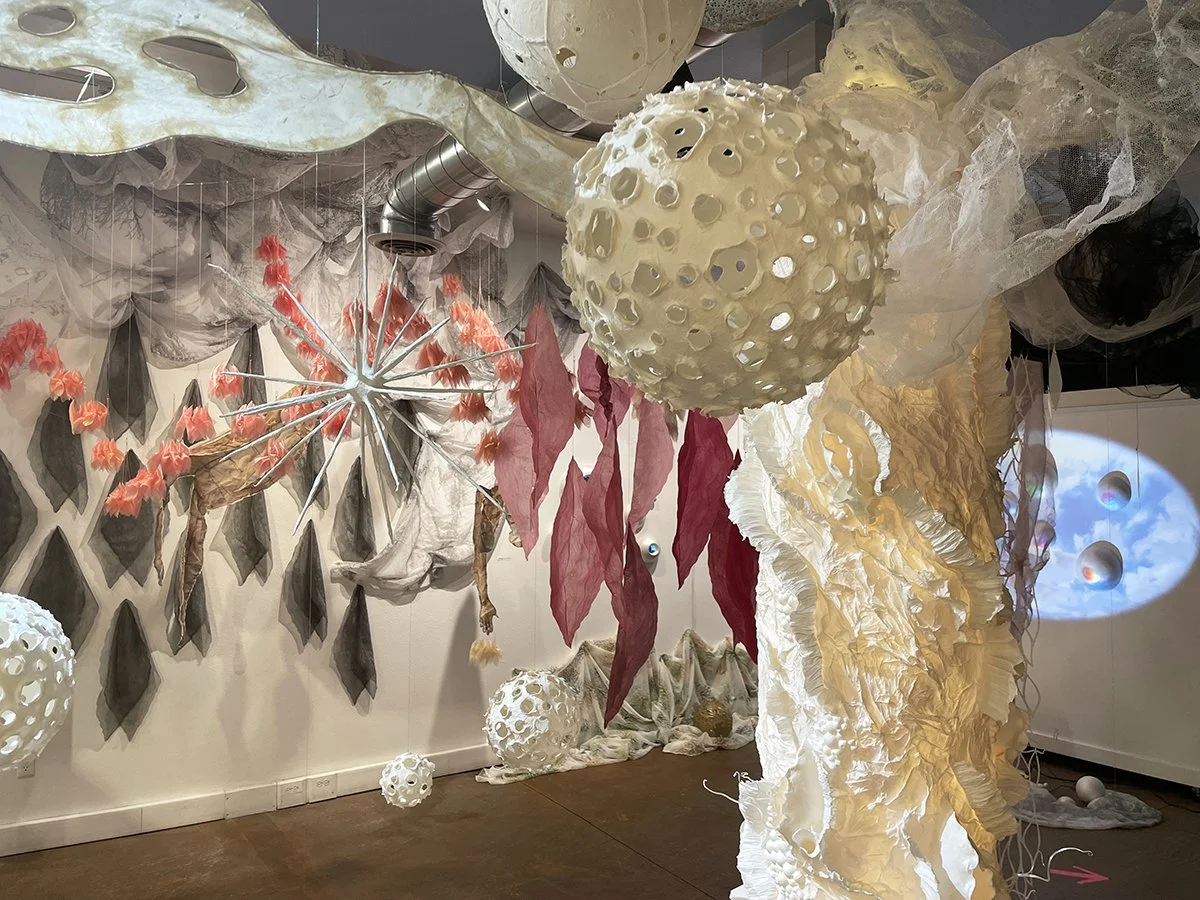Walking into the white cube space of the fooLPRoof gallery—originally a 1930s warehouse in the increasingly-trendy RiNo neighborhood, attached to an equally trendy bar—the high ceilings make the physical space optimal for the various media on display. From large-scale installation to traditional sculptures atop plinths and canvas paintings mounted on the walls, the individual components that make up the current Deep Space show are varied in both media and orientation.
Welcome to DARIA: Denver Art Review, Inquiry, and Analysis, a publication devoted to art writing and criticism focused on the Denver-area visual art scene. DARIA seeks to promote diverse voices and artists while fostering critical dialogue around art.





















